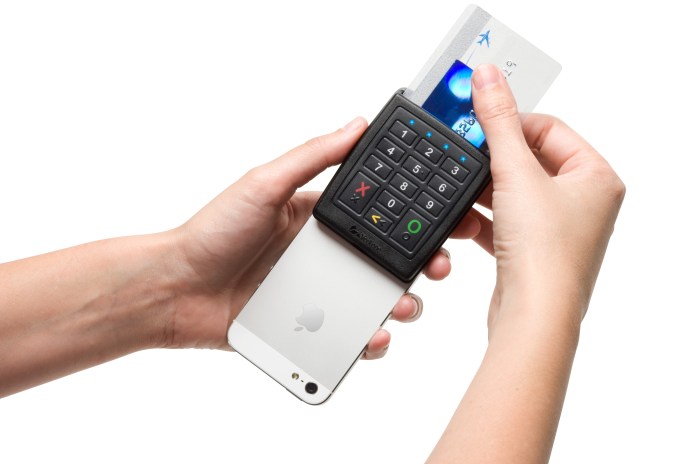Markets
Driving Cashless Initiative in a Cash-based Economy
Published
8 years agoon

- Driving Cashless Initiative in a Cash-based Economy
The combined efforts of industry players in the financial and telecommunications sectors in driving the cashless initiative, are beginning to yield results, writes Emma Okonji
Although Nigeria is still regarded as a cash-based economy among comity of nations due to the volume of physical cash transactions carried out in the country on a daily basis, the cashless initiative introduced by the Central Bank of Nigeria in 2012, no doubt, is beginning to change the whole narrative.
More Nigerians are adopting the cashless drive that is fully supported by MasterCard, financial technology solution providers, banks the telecommunications operators.
The recently concluded Cashless Africa Expo, organised by MobileMoneyAfrica, which held in Lagos , where MasterCard was the headline sponsor, among other sponsors, highlighted the adoption growth rate of cashless initiative in Nigeria and across Africa despite the love for physical cash.
Adoption Rate
The cashless initiative by the CBN, beginning with a pilot scheme in Lagos, which was later extended to five other states and the federal capital in 2013 before the commencement of a nationwide cashless policy across the remaining states of federation. Since then the adoption of cashless transactions has improved, according to participants at the Cashless Africa Expo 2017, which held in Lagos to appraise cashless initiative in Nigeria and other African countries.
The conference, however, noted that most of the transactions were done through Automated Teller Machines (ATM), which still shows the use of physical cash handling by Nigerians.
Speaking on the adoption rate of cashless in Nigeria, the Vice President and Area Business Head, West Africa at MasterCard, Omokehinde Adebanjo said: “The adoption rate of cashless in Nigeria is quite impressive and we have seen that growth rate in our partners that use our technology solution that drives cashless.”
“At the Cashless Africa Expo, we are talking about FinTech and the banks and their drive towards financial inclusion. Digital is the way to achieve financial inclusion and we have all partnered to achieve this. What we have achieved in midst of the challenges, shows that cashless adoption has improved in Nigeria,” she said.
She explained that Africa currently records 83 per cent of mobile penetration across African countries, adding that the target is for Africa to gain 100 per cent mobile penetration in financial inclusion.
“We are looking at 100 per cent penetration because the growth is enormous. It means that telcos need to expand their network to accommodate more people and they should have better data coverage.
The MasterCard Drive Towards Cashless
According to MasterCard, two things motivated their interest to support cashless initiative in Nigeria and across Africa.
“Nigeria is driving cashless and MasterCard is interested in further driving it by sharing our knowledge and providing technology solutions and initiative that will further drive cashless across Africa nations
Again, digital payment is also key to us because it will enable financial inclusion, hence our synergy with partners,” she said.
According to Adebanjo, Mastercard remains focused on working with partners to develop a cashless Nigeria, “and we are working globally to achieve the same goal of a world beyond cash.”
“In order for us to develop a digital economy, for all citizens, we need to all get behind the shift towards digital solutions. It is well documented that digital payments such as those made using a mobile device is ensuring that easier, faster and more secure payment solutions are easily accessible to everyone.”
Digital Disruption
Speaking on digital disruption as the main driver of financial inclusion, the Principal Associate, MobileMoneyAfrica, Mr. Emmanuel Okoegwale said digital disruption is changing how traditional banking services, payments, remittances are now offered in the digital economy. According to him, almost all sectors of financial services including payments, money transfers, banking and more, is being re-imagined by non-traditional providers and FinTechs, while the traditional incumbent providers are reinventing themselves very quickly to understand better the puzzle presented by the FinTech and how they can leverage on the digital movement.
He said the Cashless Africa Expo 2017 was designed not only to highlight the challenges and opportunities in the FinTech space in Africa, but to also provide knowledge and networking platform that would bring the African FinTech industry at par with its counterparts across Africa.
Technology Gap
Speaking on technology gap, Adebanjo said: “Yes there is a gap period but it can be bridged just like the case of Kenya. We rolled out an initiative across Africa, beginning from Kenya and it is a pilot programme that supports farmers to sell their products on a market platform where the buyer and seller meet. We started with Kenya because we have our research laboratory in Kenya. The initiative was fully embraced because there was a gap. So with mobile phone, buyers and sellers can meet at the online market place, and the initiative is between farmers in the rural areas and the buyers in the urban areas.
We have other initiatives in agricultural environment and retailers and we are working with a lot of partners including FinTech.”
She said no country of the world has gone completely cashless, even the United States, has 50 per cent cashless and 50 per cent cash.
However, she said in Nigeria we still carry cash, noting that there is improvement in cashless.
She said MasterCard has impacted so much on cashless and would continue to invest so much in cashless initiative to meet our global vision of a world beyond cash.
Encouraging Cashless
The Cashless African Expo encouraged Nigerians and Africans to resist the use of cash and embrace the cashless drive that CBN is currently pushing.
Panelists at the Cashless African Expo said more households in Africa own a mobile phone than they have access to electricity or clean water and that nearly 70 per cent of the poorest fifth of the population in developing countries own a mobile phone.
They said the power of mobile transcends demographics, economic disparity, and location. It has proven to be a crucial tool for driving financial inclusion on the most financially excluded continent.
According to the World Bank, only 34 per cent of adults in sub-Saharan Africa have bank accounts. To put that into perspective, the global average is almost double that.
MasterCard key strategic priorities for the past few years have been driving the African digital revolution with the aim of building financially included societies.
According to Adebanjo, rising trend on the content is that of governments which are increasingly going digital, and a greater share of government jobs in developing countries is ICT-intensive than in the private sector.
By 2014, all 193 United Nations member states had national websites: 101 enabled citizens to create personal online accounts, 73 to file income taxes, and 60 to register a business. Unfortunately, developing countries have invested more in automating back-office, than in services directed at citizens and business.
ICT and Cashless
The Cashless African Expo forum was of the view that ICT is helping communities, especially the women in those communities, to create, innovate, and improve their economic and social outcomes, and would want to continue building on this tradition of success.
The forum said while exponential technologies might be the driving force behind the digital revolution, it is Africa’s most important resource – its people, especially the younger generation – who will determine the direction it will take.
Africa’s biggest challenge over the next five years will be how it will reconcile the demands of its strident youth, and their take on how to shape the post-colonial continent, in the face of established and entrenched power structures.
Awareness Creation
In a bid to create further awareness on cashless, the E-Payment Providers Association of Nigeria (E-PPAN) said it is set to embark on a massive national awareness campaign on the cashless Nigeria Initiative, just as the CBN, re-introduced the cash processing fees on deposits and withdrawals.
The awareness campaign will cut across 30 states of the federation as the cash processing fees takes effect in different states of the country. From April 1, 2017, the cash processing fees will take effect in the existing cashless states which are: Lagos, Ogun, Kano, Abia, Anambra, Rivers and Abuja. While in Bauchi, Bayelsa, Delta, Enugu, Gombe, Imo, Kaduna, Ondo, Osun and Plateau states, it will take effect on the May 1, 2017.
Edo, Kastina, Niger, Oyo, Adamawa, Akwa-Ibom, Ebonyi, Taraba and Nasarawa will begin the implementation of the cash processing fees from August 1 2017, while the last states to implement the cash processing fees on October 1, 2917, will be Borno, Benue, Ekiti, Cross River, Kebbi, Kogi, Yobe, Sokoto and Zamfara State.
CBN in partnership with E-PPAN has deemed it imperative to continue to sensitise the populace on the many benefits of the cashless initiative, which include easier opportunities for Micro, Small and Medium Enterprises (MSMEs) to access funds; reduction of government leakages; increased security; accountability and transparency; reduce cost of providing financial services and gradual reduction in conventional bank charges among others.
As the cashless initiative spreads across the country and the cash processing fess is being implemented, E-PPAN said it will also visit more states such as Katsina, Oyo, Ebonyi, Ekiti, Kogi and Cross River states. E-PPAN will engage one-on-one market traders and their customers, artisans, trade associations, schools, traditional rulers and other key influencers. This is to make sure that everyone is aware and enlightened on the policy and its benefits for greater adoption of electronic payment channels.
The Executive Secretary/CEO of E-PPAN, Mrs. Onajite Regha, who made the disclosure, stressed that one of the main reasons for the awareness campaign, is to make people embrace the alternative payment to cash. She listed the alternative electronic payment system as: mobile phone for mobile payments or banking; the Point-of Sales Terminal (POS), for payment of goods and services and the internet for online purchases or internet banking, among others.
Is the CEO and Founder of Investors King Limited. He is a seasoned foreign exchange research analyst and a published author on Yahoo Finance, Business Insider, Nasdaq, Entrepreneur.com, Investorplace, and other prominent platforms. With over two decades of experience in global financial markets, Olukoya is well-recognized in the industry.

You may like
-


President Tinubu Presents N47.9trn 2025 Budget As Debt Servicing, Security, Infrastructure Take Lion Shares
-


I’m Not Nigeria’s PR, UK Party Leader, Kemi Badenoch, Tells Shettima
-


Nigeria and France Forge Strategic Alliance to Boost Solid Minerals Sector
-


Zhongshang Fucheng Moves to Auction Nigerian Properties in UK Following $70M Arbitration Award
-


Nigerians and Indians Lead UK Job Market Growth Amid Post-Brexit Migration Shifts
-


Violent Protests Erupt Across Nigeria, Leaving Six Dead and Many Injured











